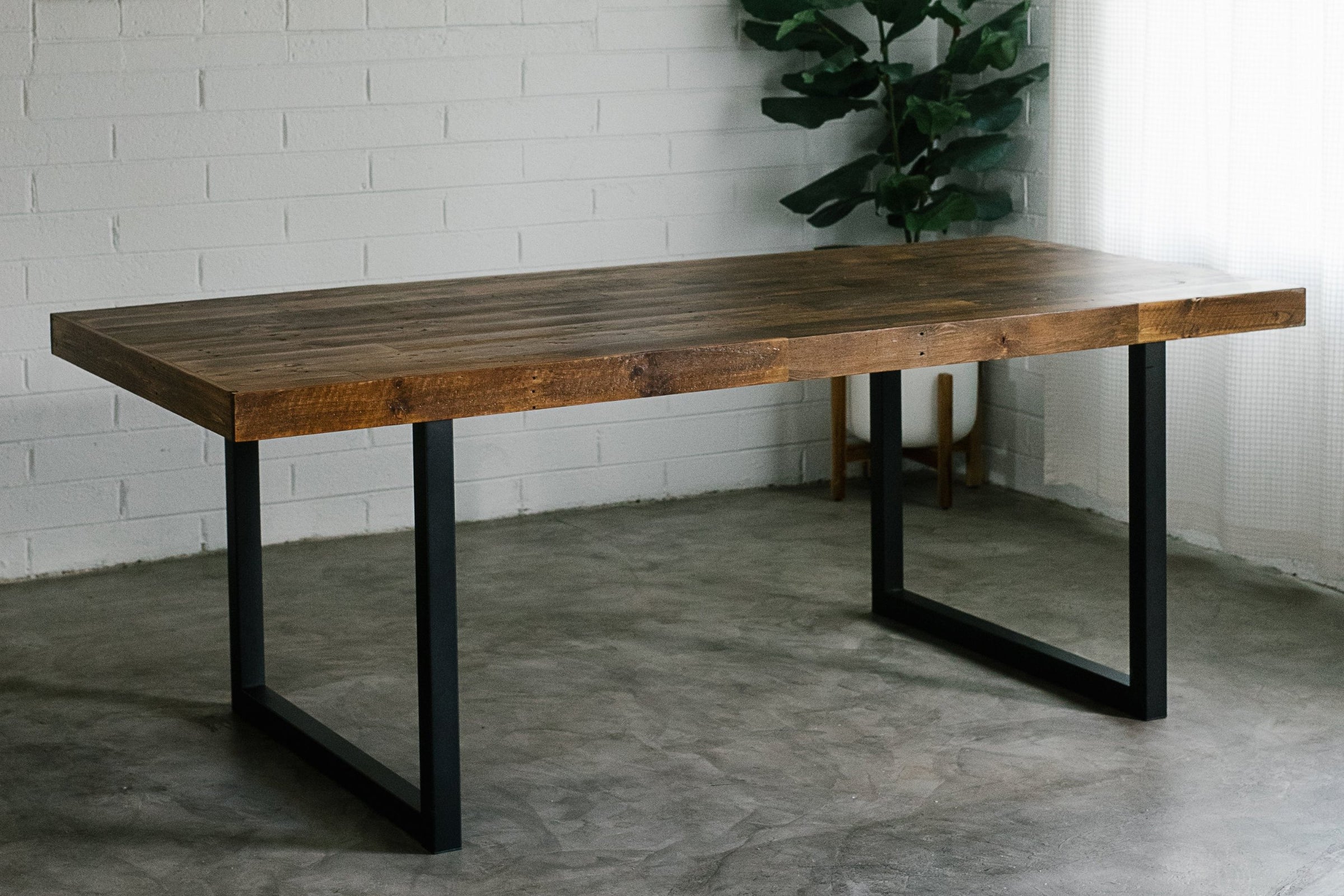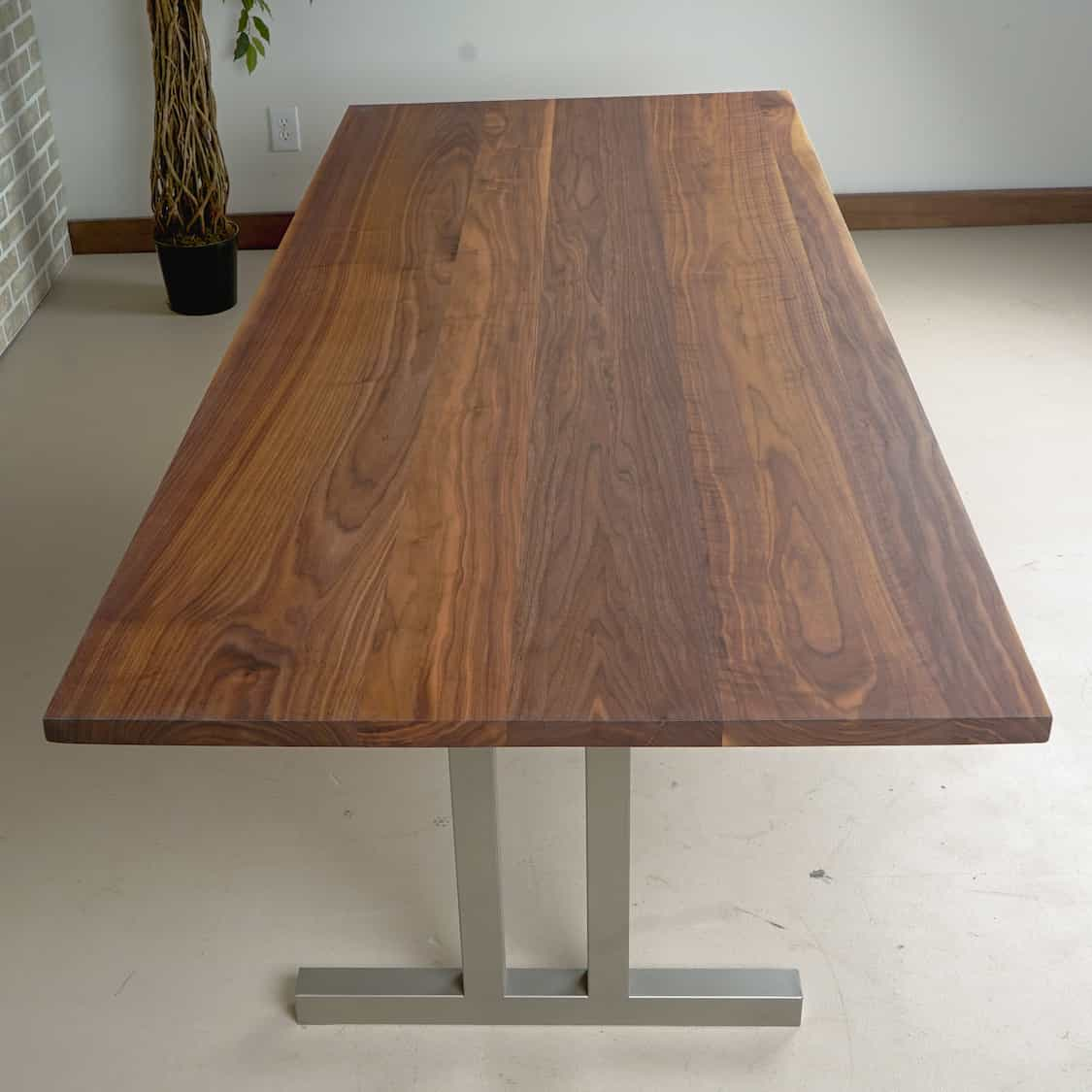Checking Out the Different Types of Eating Table Legs Timber for Your Dining Room
The option of table legs timber can greatly affect both the useful and aesthetic qualities of your dining room. Solid timber alternatives, such as oak and walnut, give a classic appearance with unmatched resilience, while crafted wood choices supply innovative layouts that mimic the splendor of natural grains. Furthermore, the expanding pattern of reclaimed timber presents a sustainable component that interest ecologically aware consumers. As we check out these numerous alternatives, it becomes important to think about not just the aesthetic appeal however likewise the sensible ramifications of each material option. What variables should direct your choice?
Strong Timber Options

Unlike crafted products, solid timber is much less susceptible to warping and damages over time when appropriately kept. Each item of solid wood is distinct, showcasing individual characteristics that include to the beauty and character of the dining table.
Additionally, strong timber can be finished in many methods, ranging from natural oils to tarnished coatings, allowing homeowners to personalize their furnishings to match their decoration. In recap, selecting strong timber for dining table legs not only guarantees architectural honesty yet additionally enhances the aesthetic charm of the eating area, making it a worthwhile financial investment for any home.
Engineered Timber Alternatives

Plywood, created from multiple layers of timber veneer, is stable and specifically strong, making it an exceptional option for eating table legs. Its layered composition permits it to withstand changes in moisture and temperature far better than traditional strong wood. MDF, on the various other hand, supplies a smooth surface for painting or veneering, allowing designers to attain a refined look while maintaining architectural stability.
Particleboard, frequently used in affordable options, offers suitable toughness and is light-weight, making it easier to handle. Nevertheless, it might not be as sturdy as plywood or MDF. When picking crafted timber alternatives, it is important to take into consideration the intended use and wanted visual. These products not only improve the capability of eating spaces yet additionally permit higher layout versatility, ensuring that contemporary and typical styles can exist side-by-side harmoniously.
Reclaimed Timber Features
Recovered timber offers a distinct blend of sustainability and personality, making it a progressively popular selection for dining table legs. Sourced from old barns, manufacturing facilities, and various other frameworks, reclaimed timber symbolizes a background that new materials just can not duplicate. Each piece lugs its very own story, marked by distinctive flaws, knots, and differing grain patterns, which add to a table's special visual allure.
In enhancement to its aesthetic appeal, reclaimed wood is an eco-friendly option. By repurposing previously made use of products, it reduces the need for brand-new lumber, therefore assisting to preserve woodlands and reduce waste. This straightens with a growing customer choice for lasting techniques in home furnishings.
In addition, recovered timber is frequently extra long lasting than recently harvested wood as a result of its age. The all-natural drying out procedure that redeemed timber undertakes outcomes in a denser and stronger product, making it much less vulnerable to bending and splitting. This improves the durability of dining tables, enabling them to withstand the rigors of everyday usage.
Softwood vs. Wood
When picking eating table legs, recognizing the differences between softwood and hardwood is important for achieving both visual and useful objectives. They generally display an even more rustic look, making them ideal for country-style or informal dining rooms.
On the other hand, woods, sourced from deciduous trees like cherry, oak, and maple, are renowned for their density, stamina, and toughness. The complex grain patterns and rich hues of woods provide a timeless and innovative allure, making them ideal for official eating settings. While woods have a tendency to be more expensive and larger, their strength versus wear and tear usually validates the financial visit the website investment.
Eventually, the option in between softwood and hardwood for eating table legs need to straighten with your layout vision, usage requirements, and spending plan, making sure that your eating room reflects your individual design while staying practical with time.

Coatings and Treatments
The visual charm and durability of dining table legs can be substantially enhanced via numerous coatings and therapies. These processes not just shield the timber from damages yet likewise boost its appearance, permitting it to match varied indoor styles.
One typical therapy is staining, which permeates the timber and enhances its all-natural grain while adding color. Stains supply an abundant, stylish appearance, making it possible for property owners to match their furnishings with existing decoration. Alternatively, clear finishes such as polyurethane or varnish create a protective layer without altering the wood's original tone, ensuring toughness against wear and tear.
In addition, all-natural oils, like tung or linseed oil, nourish the timber and offer a refined shine, all while being environment-friendly. These oils enable the surface to breathe, site link protecting against dampness buildup and prospective warping.
For those looking for a rustic appeal, weathered or troubled coatings can be put on develop an aged appearance, adding character to the piece. Eventually, the option of therapies and surfaces relies find this on personal choice, wanted appearances, and the details timber kind, making it vital to think about these aspects when choosing table legs for your area.
Verdict
Solid timbers, engineered options, and redeemed alternatives each deal distinctive benefits, catering to different choices and requirements. Ultimately, the selection of wood type should straighten with wanted style, longevity, and ecological considerations, boosting the overall eating experience.
The option of dining table legs timber can greatly affect both the useful and aesthetic qualities of your dining room - Dining Table Legs Wood. Strong timber alternatives, such as oak and walnut, provide a timeless appearance with unequaled durability, while engineered timber options use innovative styles that mimic the richness of all-natural grains. Strong wood supplies a classic quality that can elevate the general style of an eating room. Each piece of solid wood is unique, showcasing individual features that include to the appeal and personality of the eating table
In addition, recovered timber is frequently much more long lasting than freshly gathered wood due to its age.